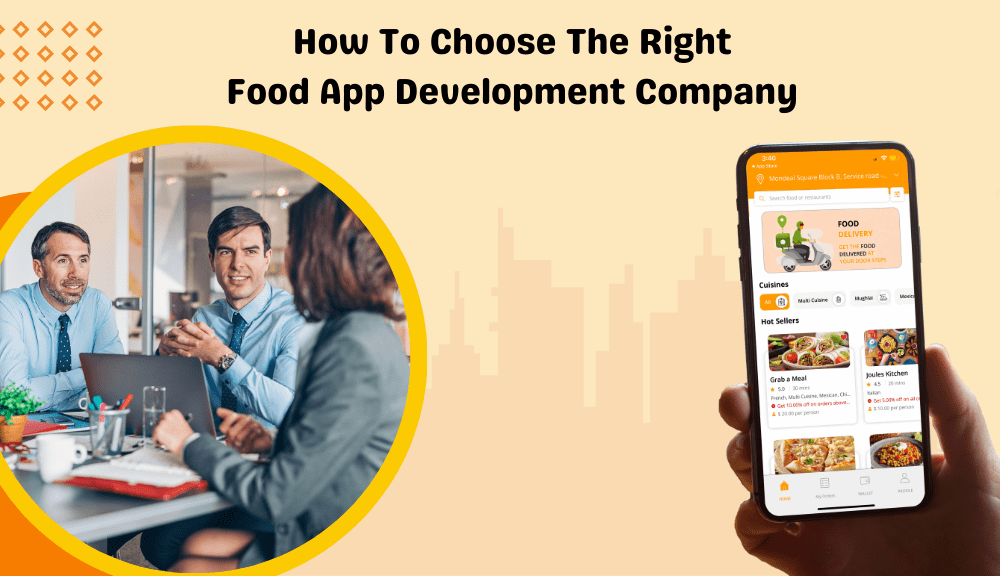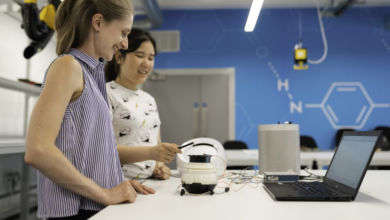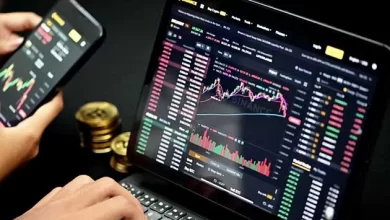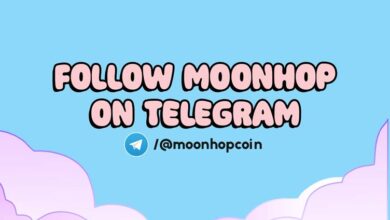How To Choose The Right Food App Development Company Team Structure

The current and impending growth of “apps culture” reflects the enormous market potential for mobile app development. As of today, people rely on mobile apps to carry out their day-to-day tasks. As far as 2023 is concerned, the estimated revenue from mobile apps peaked at around 935 billion dollars.
As a result, you can expect to see new tech or products, i.e., the Internet of Things (IoT), popping up to drive innovation for app developers. For entrepreneurs, starting a business around mobile applications will be the best investment. The app-based business can help them achieve maximum returns in the long term.
If you are starting a delivery business, you must assemble a team for the app’s design, development, and launch. But before diving right into the team structure, let’s discuss the team hiring approaches you can consider when developing your app.
App Development Collaboration Model
A well-functioning team supports your vision and commits fully to the idea until the organic traffic becomes active. Whether you decide to outsource the work or hire an experienced third-party agency for it, having a good team at the end really should be the goal! A good team can help you step into the world of the app-based business marketplace easily and achieve success. Typically, the hiring models are:
- Collaborating with freelance specialists
- Hiring an in-house team
- Outsourcing or outstaffing a dedicated team from abroad
You can choose one or combine different models based on the time and money you are willing to spend. Since each model has pros and cons, you must consider the long-term benefits, as it generally takes months to develop an app. Let’s now discuss the food app development team structure.
Given that the team structure is highly dependent on the scope of the project, let’s start with the basic team members that must be present at all times:
Project Manager / Product Manager (PM)
A product manager is in charge of overseeing the app development process and steering the project to success. They translate your demands into requirements so the development team can understand and work.
Usually, a product manager is a synonym for a project manager. But while these two specialists are managers, they carry out different tasks. A project manager overlooks the bigger picture while the team members work on their respective areas of responsibility. A project is finite, with a clear plan of activities, whereas a product generates continuous user value.
Generally, assigning a project manager means hiring an individual who takes responsibility for a project from start to finish. A skilled project manager ensures that budget issues don’t occur or are resolved in the best and quickest way possible. Working closely with the product manager and the development team, the project manager pays attention to every detail while keeping an eye on the big picture.
Designer (UI / UX)
A UI/UX designer turns your idea into a full-scope mobile application. Often, entrepreneurs hire a UX and a UI designer separately to create a much more valuable and attention-to-detail application. However, you must look for one key specialist capable of perfectly balancing between form and function.
Additionally, UI/UX designers must work closely with other app developers to facilitate a great user experience. Therefore, select a highly communicative individual who has a great team spirit.
As far as the skillset goes, a UI/UX designer must have strong attention to detail and a keen eye for aesthetics. Since you are planning to build a user-centric food app, it is the job of the UI/UX designer to create a seamless navigation flow coupled with attractive visuals
Developer (iOS / Android)
Depending on the complexity of the app’s structure, one Android and one iOS developer are needed to manage the core operations of the Food App Development business. They are responsible for building app architecture and producing codes according to the specifications of the project manager. Like other team members, you must hire a developer with the appropriate knowledge, programming skills, and experience per budget.
Based on whether you are planning to build cross-platform food apps or native apps for Android and iOS, you will need developers who are proficient in Java and Kotlin or Objective-C and Swift, respectively. Moreover, they must know cross-platform frameworks, such as Xamarin, Flutter, React Native, etc.
As mentioned earlier, for a basic food app, two or three developers should be enough. When the project expands, you might need support from a backend developer. Unlike a frontend developer who takes care of the visual aspects of the app, a backend specializes in server-side development, API integrations, database management, etc.
Quality Assurance (QA) Engineer
Even though developers essentially check their codes for bugs, the role of a savvy QA engineer can’t be underestimated. But testing is just a part of what QA brings to the table. The main task of a QA engineer is to monitor every stage of the app development phase, ensuring that it is bug-free, functional, and responsive before launch.
Furthermore, solving bugs on time allows the app to be released under the deadline and prevents the budget from going over. Therefore, you must hire a methodical QA engineer who can think critically. They should also be familiar with various testing techniques, like functional, regression, performance, and usability testing.
App Development Team Size
How many people do you need to build an app? Hiring only a few team members prolongs the app development, whereas having too many team members increases the development costs. To choose appropriately, you should estimate based on the development scope and timeline. Consider the following factors to get things started:
- Number of platforms
- Complexity of the features
- Minimum years of experience
- Allocated budget
A full-fledged food ordering and delivery app project requires four apps for the user and the driver. This is because native apps are platform-specific apps—two apps for your customer and another two for the driver—developed for Android and iOS platforms, respectively.
However, if you opt for cross-platform app development, you’ll only need to develop two instead of four. In each case, another app exists for restaurant owners, a website, and an admin panel for the business owner.
Choosing the Right Team
Start by looking through the portfolio of each designer and developer you are planning to recruit, regardless of whether they are in-house or outsourced. For better clarity, hop on a call with a project manager who knows to find what you are looking for. But before talking to future recruits, always be well-versed and prepared about the business you plan to enter. Do your homework and find current market trends and gaps that must be listed along with the features.
Furthermore, prepare a list of questions for each team member and ask them about their process, collaboration style, and values. Try to give them hypothetical situations and see how they react. Above all, you must aim to bring valuable experience to attract great developers, as executing your idea will be a large part of their career.
Outsourcing Teams to Pre-Built Apps? Why Not?
Developing a proper structure that fits your requirements is not an easy endeavor to pursue. Unsurprisingly, many businesses outsource their app development to third-party vendors in Vietnam, India, Thailand, etc. However, since the demand for building online delivery businesses is rapidly increasing, new forms of development are attracting modern entrepreneurs.
One such method is the rise of clone apps for on-demand purposes. Almost all on-demand food delivery businesses work in the same fashion. The workflow, layout, number of screens, and even most features are almost identical in many globally recognized food delivery apps. Therefore, entrepreneurs who followed the same development style often found themselves in the same loop of design and development.
Here, third-party developers build an apps like Doordash, Ubereats Clone, Grubhub, or Postmates Clone, combining every feature in a native development approach. This way, you don’t have to spend months on design and development inside, test the demo of these apps, and buy their licensed source code. Moreover, a professional white-label firm customizes the entire clone app package as per your business name, logo, color scheme, language, and currency in 1-2 weeks.
Conclusion
Choosing the right individuals is crucial, whether outsourcing or creating the app in-house. They must share the same level of commitment and enthusiasm as you do and should perform way beyond your expectations. One rookie mistake could land your app idea in many more months of development, so you must spend your time wisely during recruitment.





